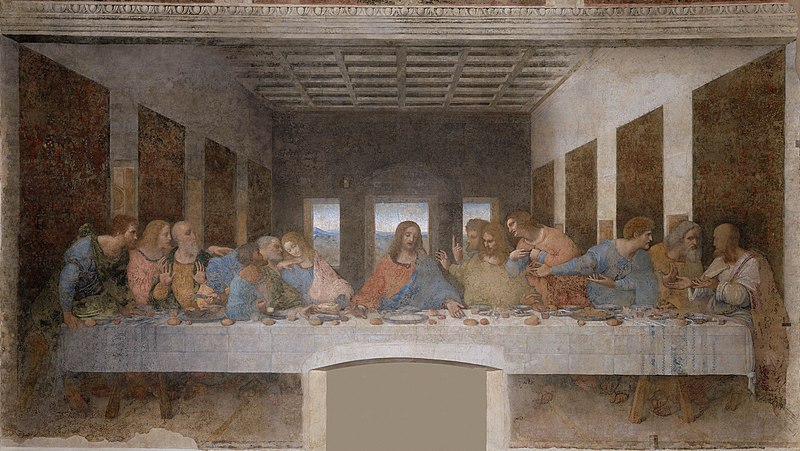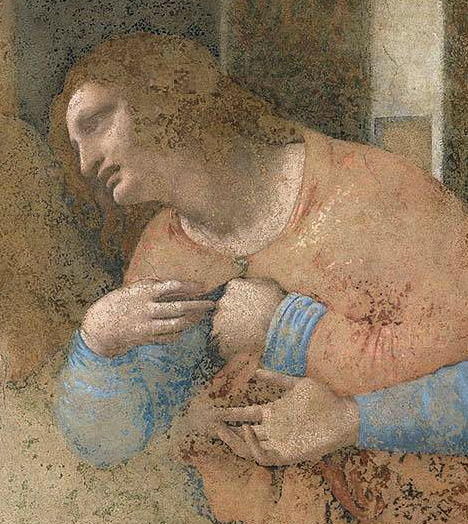
Leonardo da Vinci’s Last Supper, which is located in the Convent of Santa Maria delle Grazie in Milan, Italy, has suffered from deterioration and fading over the centuries due to several factors.
One major factor is the technique that Leonardo used to create the painting. Instead of traditional fresco painting, where pigments are applied directly onto wet plaster, Leonardo used an experimental technique known as tempera on plaster. This method involved painting directly onto dry plaster, which made the painting more vulnerable to damage.
Additionally, the painting has been subjected to various environmental factors over the years, such as humidity, temperature fluctuations, and pollution. These factors have contributed to the fading and deterioration of the painting.
In recent years, restoration efforts have been made to preserve and protect the painting. However, despite these efforts, the painting remains fragile and continues to suffer from deterioration over time.
The Last Supper is a famous painting created by Leonardo da Vinci during the Renaissance period. The painting depicts Jesus and his disciples during the last meal they shared before Jesus’ crucifixion. The painting is located in the Convent of Santa Maria delle Grazie in Milan, Italy, and is considered one of the most important works of art in the world.
The painting was created between 1495 and 1498, during Leonardo’s time in Milan. The painting was commissioned by Ludovico Sforza, the Duke of Milan, for the refectory of the Convent of Santa Maria delle Grazie. Leonardo used an experimental technique known as tempera on plaster to create the painting, which involved painting directly onto dry plaster instead of traditional fresco painting.
The Last Supper painting is massive in size, measuring approximately 4.6 meters by 8.8 meters, and is located on the wall of the refectory. The painting depicts the moment when Jesus announced that one of his disciples would betray him, causing a stir among the group. Leonardo masterfully captures the emotions of the disciples in the painting, creating a sense of drama and tension.
One of the most remarkable features of the painting is the way that Leonardo has used perspective to create depth and a sense of three-dimensionality. The painting is set in a large room with a vaulted ceiling, and Leonardo has used this setting to create the illusion that the room extends far beyond the confines of the painting.

In conclusion, the Last Supper painting in Milan is a masterpiece of Renaissance art that continues to captivate audiences around the world. The painting’s use of perspective, masterful composition, and dramatic portrayal of the disciples have made it an enduring symbol of artistic excellence. Despite the challenges that the painting has faced over the centuries, it remains one of the most important works of art in the world, a testament to the genius of Leonardo da Vinci.
